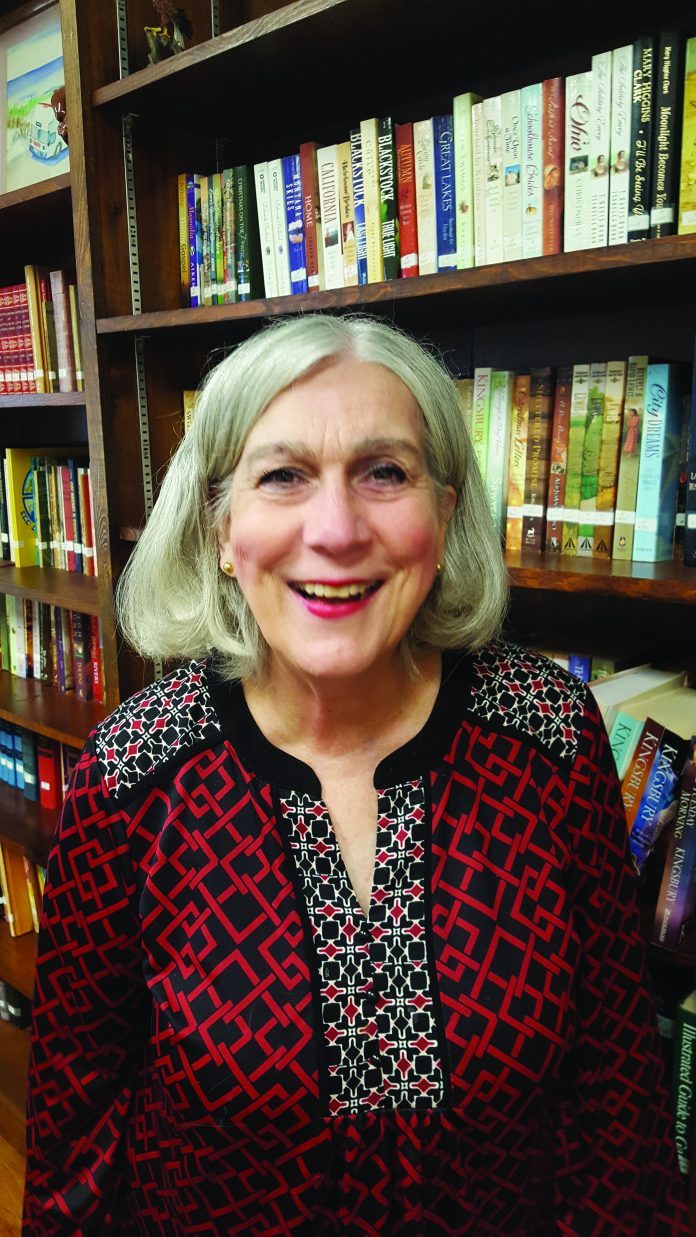By Beth Pinyerd
As April comes to an end, I love the poem, “April showers bring May flowers!” April showers bring rainbows, too! When I look at rainbows, I think of promises. I have a heartfelt dream in connecting the older generation to our younger generation with intergenerational programs that are very rich in encouragement from the old to children, as well as children outreaching to the older generation.
I reflect back on the poem by Robert Fulghum, “All I Ever Really Needed to Know I Learned in Kindergarten.” It ends with the statement, “And it is still true, no matter how old you are, when you go out into the world, it is best to hold hands and stick together.” This is the truth in the relationship between the young and old.
The baby boomer generation, because there are many of us, will set new trends in the format of elderly care. Intergenerational programs will increase in years to come.
The National Council on Aging defines Intergenerational programs as activities that increase cooperation and exchange between any two generations. “It has been shown that a relationship between young and old enlightens both generations.”
As I have been blessed to serve both the young and old, intergenerational relationships are something that go beyond anything that money can buy! What is exchanged mentally, physically, socially, and emotionally is so rich in benefits for the young and elderly.
I invite you to share my heart-felt dream of setting up intergenerational centers for young and old. I’d like to share my philosophies which I have gleaned from research and hands-on experiences. It’s my hope you could incorporate the few ideas I share with new ideas, visions and joy as we explore new possibilities for our young children and those young at heart, the elderly in our community.
As we stroll into our Intergenerational Center, which we will hypothetically call “Rainbow School Across the Generations,” I would like for us to visit some of the centers.
- We approach the table with intergenerational name tags and supplies. Name tags are so helpful for the adult/child pairs to get to know each other. Older adults and children work in pairs to decorate their name tags. The intergenerational objectives achieved are interaction and communication; self esteem enhanced; team work; encouragement of creativity; moderate exercise.
- The art center has a fresh white sheet of paper stretched out on an easel or table just waiting to be painted or drawn on by the hands of a young child and older adult. The blank easel page is waiting for the intergenerational artists’ touch. Paint smocks, washable paints and water wait for the chubby hands of the young child and the soft hands of wisdom of our elderly friend. Special rules or considerations are gently stressed not to eat the paint and for wet surfaces to be dried to prevent falling and slipping. This can be done by staff and volunteer facilitators who understand the needs of young children and the elderly. The project of self portraits of each other create a loving bond of getting to know each other.
- The intergenerational puzzle center offers objectives in cognitive development, social interaction, as well as teamwork and cooperation. Full body pictures of children, adults, and animals offer teamwork challenges for the young and old to put the pictures together, and offer discussion time.
- The block/Lego center provides small motor exercises, as well as teamwork in creativity. The older adult can reminisce with his younger friend about how to build a car from the past.
- Walking over to the home center we see small trowels, seedlings and plant cuttings, gardening gloves, plastic containers, dirt, and water cans ready for an intergenerational gardening experience of planting seeds, flowers, and as a team of young and old watching their plants and flowers grow.
- Story-book corner has a rocking chair for older adults, small chairs and carpet squares for the young children to gather around to listen to a good story. With the dynamics of our society and culture, many young children are away from their grandparents because of parents taking jobs far away. Story time not only provides a warm time for listening and communication skills between young and old, but it provides a socialization need of grandparenting as well.
- Intergenerational math centers provide opportunities for hands-on counting, which is good for the young mind and the elderly mind. One-on-one correspondence helps young and older minds recognize a set of objects and their assigned numbers.
- Cooperative learning is taking place in the science center where young and old make a hypothesis on different objects that float and don’t float. Taking care of different kinds of pets is part of the shared responsibilities for the young and old.
- Free play is a child’s work. Adults of all ages can still play, too. We all instinctively know how to play. Intergenerational play promotes cognitive, social, physical and emotional benefits for young children and we older adults.
I have provided just a very brief framework of the advantages of the intergenerational community. Young children provide such a spark of energy and enthusiasm to us older adults. Children are truly blind to age differences. Effective intergenerational programming is very strong and benefits everyone involved. It takes a lot of work and perseverance. But, when staff and intergenerational volunteers witness the warm interaction of facilitating situations where the young and old come together, this complete outlook between the young and old is a blessing forever. This intergenerational framework can be incorporated within schools, retirement villages and centers, and churches.
As we baby boomers provide new trends, I hope that intergenerational concepts and programs will be one of those positive trends. Baby boomers and the greater generation need to grab the hand of a young child and follow a rainbow of joy!


